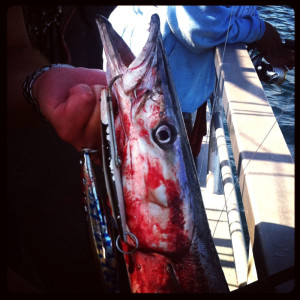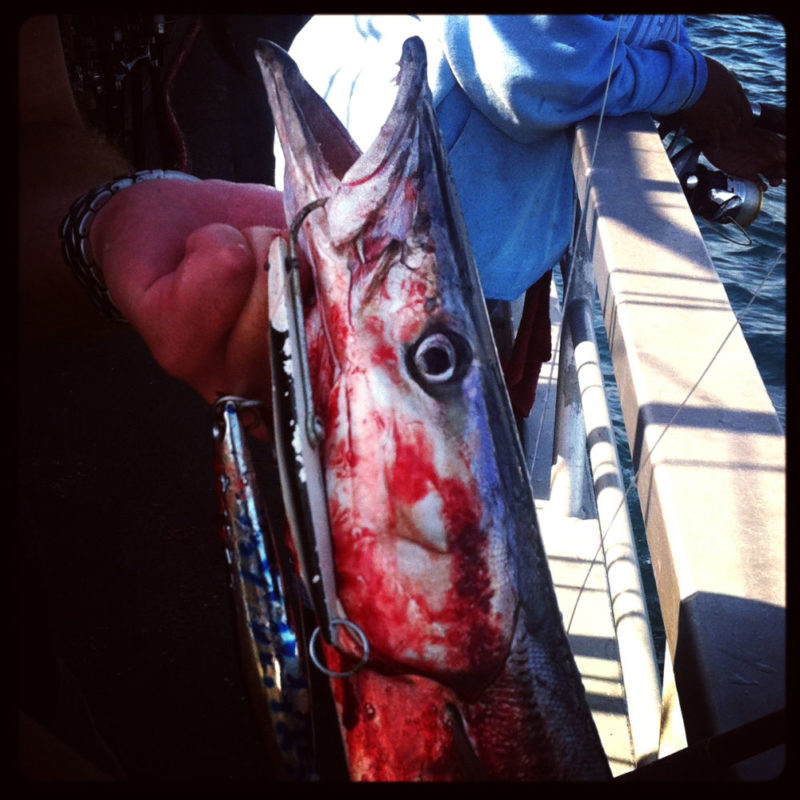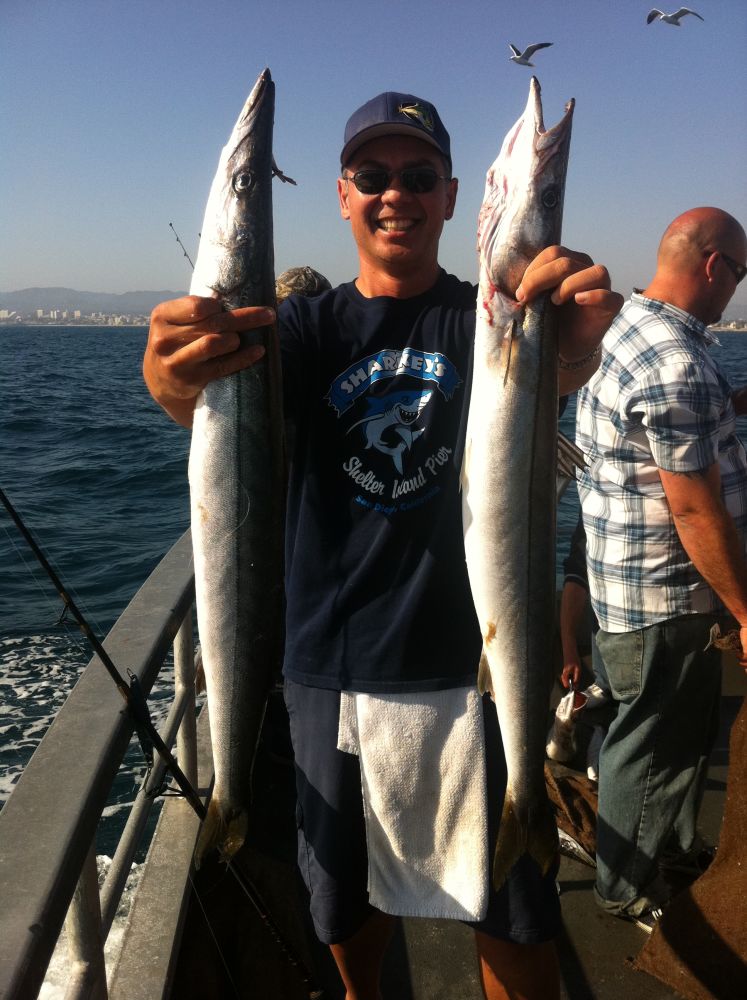20 or 25 lb test is not going to cut it. Some people like to go 30 lb test as they feel it makes their jig swim better, but I like to go with 40 lb test when throwing the jig.
2. What are they biting on?
Sometimes nobody fishes bait. Part of the reason is that the sometimes the bait are tiny anchovies. The bigger reason though is you are going to have a much better hook to land ratio when throwing the jig. When I say, “throwing the jig”, I’m referring to throwing iron. In the picture to the left below, you’ll see my favorite barracuda jig…a Tady 45 in chrome with blue mackerel stripes. Jake refers to it as the “cuda killer.” You’ll also notice that the fish bit Captain John’s black and white jig too. Both are surface iron. I saw guys get bit on myriad patterns…blue and white, mint, scrambled egg etc. Any good jig fisherman is going to tell you that it isn’t the color so much as how it swims. Figuring that out is best done before you pay to get out on a boat! Get in some practice time. I put in time when I was on vacation last week, and it paid off. Even when you fish a lot like me, I hadn’t really picked up my jig stick since last summer and getting back in the rhythm was time well spent. Go to a dock, beach, even a big grassy area at a park to just practice casting. It all helps. A green mackerel pattern. When we first started yesterday, Capt. John said the fish were holding 30-40 feet below the surface. You can always use a surface iron and let it sink, but I’d rather use a heavier jig that’s made specifically for this scenario. It’s good to have different kinds with you, so you can adapt on the water. I threw it twice…got bit both times. First fish I landed. Second fish I lost to a seal…taking the jig with him. Damn seals. Which brings me to my last point…
 3. Check your line and drags often
3. Check your line and drags often
These fish are pretty big. When I threw the green mackie jig above and hooked up on my first cast, I didn’t bother to check the drags after landing the fish and casting out again. Big mistake. The first fish loosened up my drags, so the second fish was flopping around for too long when a seal took him and my jig with it. Also, check your line often (in between stops is good) for cuts and abrasions. These are toothy fish and they wreak havoc on your line. If you notice that your line is rough, cut off and retie higher up on the line where it’s fresh.
I hope these tips encourage you to go out and enjoy this bite. Hopefully they help you come home with fish in your sack. Tight lines!
Originally from SocalSalty.com


